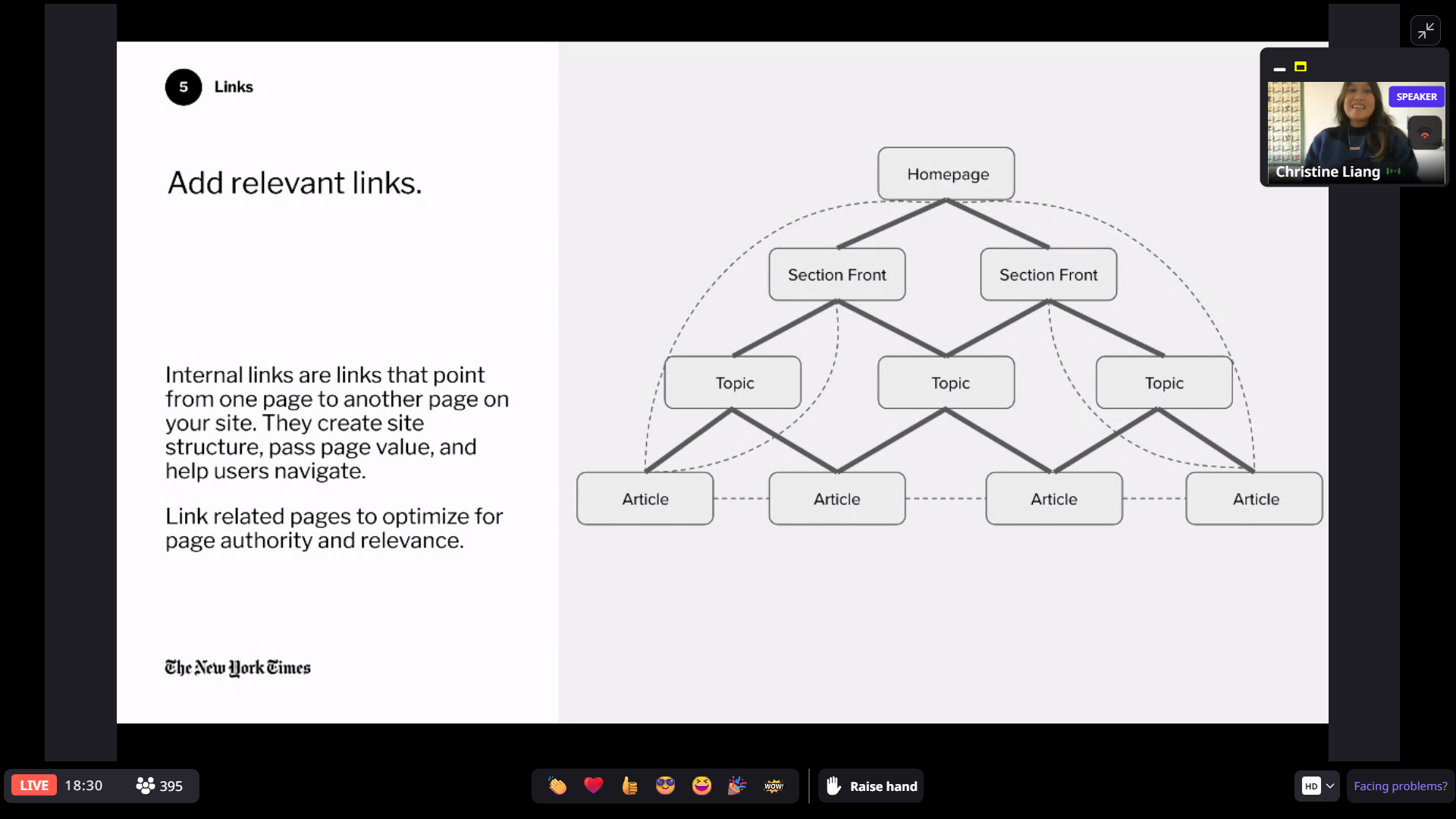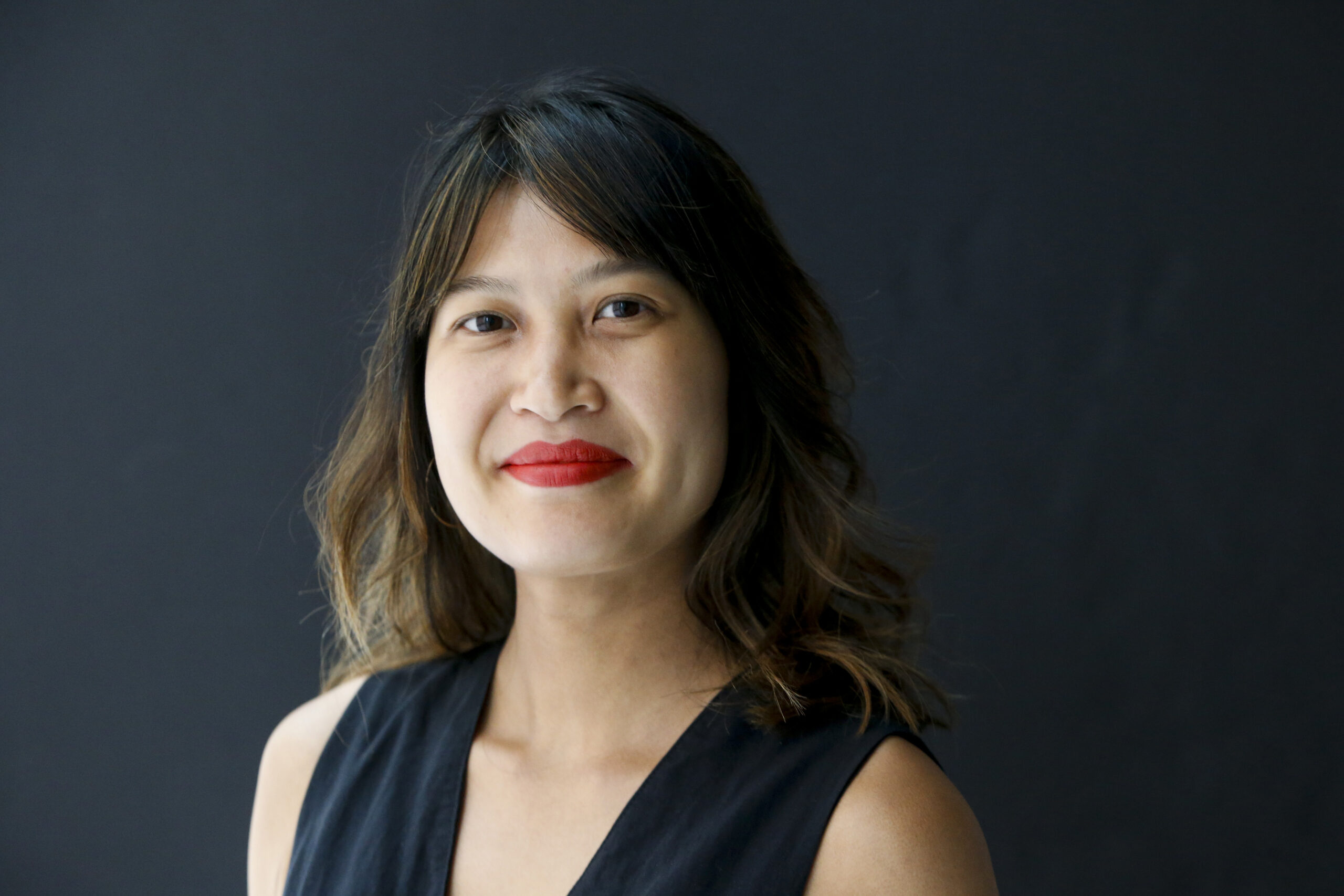News search has gotten complicated, and it’s more important than ever to stay up-to-date with the latest best practices in news SEO.
Christine Liang, the SEO Director at The New York Times, brought solutions to the 2021 News and Editorial SEO Summit (NESS) via her presentation, “Everything you need to know about editorial SEO.”
As Liang said, “The news space is complicated. There’s Top Stories, Google News, domestic and international algorithms, the list goes on and on. It can feel utterly overwhelming.”
But, she added, “I’m here to uncomplicate things.”
Liang shared a number of news SEO tips that The New York Times and other major publications like theirs use to optimize content for maximum visibility in search. Here are 10 you can put to work for your own site.
1. Keyword Research: Focus On Search Intent
Liang advised the 600 news publishing and marketing professionals attending NESS to start their keyword research with Google’s autocomplete feature. She advised, “Evaluate the types of search results that show up for your keyword.”
Advertisement
Continue Reading Below
For example, ask yourself:
- How are searchers talking about the topic?
- How are competitors addressing the topic?
- What types of content are coming up for the topic?
She said, “Doing your research will help you narrow in on the keyword and search intent.”
Liang also recommended gauging interest in keywords with Google Trends. “Understand search demand for a topic by looking at different timeframes.”
And she urged attendees to scroll down to “find breakout terms … and figure out if a trending topic still has demand.”
2. Craft Compelling Headlines
Liang said, “The SEO headline (title tag) is one of the most important ranking factors. Keywords in the headline signal to users and Google what your content is about.”
She advised doing the following:
- Keep it under 65 characters, and even shorter for mobile.
- Place the main keywords closer to the front.
- Make it engaging! SEO headlines don’t have to be snoozy.
 Screenshot from NESS 2021, used with permission.
Screenshot from NESS 2021, used with permission.Liang also said it was a good idea to refresh headlines with new information and new keywords.
Advertisement
Continue Reading Below
She said, “Updating headlines is a good way to ensure the reader is getting the most current news. It’s also a freshness signal – it tells Google to come back for a recrawl because there is new information.”
She advised, “Make it a quality update: pair headline updates with other types of updates, such as an image change or more body copy.”
3. Include Keywords in URLs
Liang also encouraged news publishers to include primary keywords in URLs.
She said, “Keyword use in a URL has some ranking weight, but it mainly signals to users what the page is about.”
She also suggested structuring URLs under the appropriate category.
She said, “URL paths get picked up as a breadcrumb in Google’s search results. This is a reflection of your site’s hierarchy.”
She added, “File your story to the most relevant section to help build categorical authority.”
4. Incorporate Images and Videos
Liang also recommends incorporating visual content – especially during visually leaning moments.
She said, “Give people choices! Not everyone coming to your story is looking to digest it through text. Images and videos provide users with another means to consume the content.”
 Screenshot from NESS 2021, used with permission.
Screenshot from NESS 2021, used with permission.Liang added that including high-quality photos would improve click-through rates (CTR) and engagement.
She said, “In Top Stories, a compelling image can be the reason a user chooses to click through to your story over competitors’ stories. So, pay attention to the competition’s photos.”
Advertisement
Continue Reading Below
She added, “Once on-page, provide more context around the images.”
And Liang urged attendees to bolster ranking signals and engagement by incorporating videos.
She said, “During live events, Google prioritizes video in search results,” and added, “Include clips when relevant.”
5. Add Relevant Internal Links
Liang emphasized adding relevant links.
She said, “Internal links are links that point from one page to another page on your site. They create site structure, pass page value, and help users navigate.
She added, “Link related pages to optimize for page authority and relevance.”
 Screenshot from NESS 2021, used with permission.
Screenshot from NESS 2021, used with permission.Liang also said adding internal links would improve discoverability and crawling of content.
Advertisement
Continue Reading Below
She said, “Link to priority stories from relevant content. Use keyword targeted anchor text to signal to Google what the linked page is about.”
She added, “Homepage, section fronts, and topic pages are also valuable pages to link out from.”
6. Prioritize Publishing Speed
Liang said it was important to prioritize speed, and that “Being the first to publish a story has its upsides. Your story accumulates clicks, backlinks, shares, social buzz ahead of the competition – leading to ranking advantages.”
But, Liang also advised spacing out your updates.
She said, “Google rewards fresh, quality content, and surfaces the most relevant information in Top Stories. So, don’t give it all away at one go!”
She added, “Publish the most essential details first. Then republish with new chunks of content (around 50-100 words).”
7. Keep The Timestamp Fresh
In addition to the six editorial SEO best practices mentioned above, Liang also shared some advanced tips for news SEO.
For example, she recommended keeping the timestamp fresh.
Advertisement
Continue Reading Below
Liang said, “The timestamp on a story plays a large role in Top Stories. An up-to-date timestamp draws people in. It signals to users that the articles are more recent.”
She added, “You can trigger a timestamp update by sending Google different freshness signals.” And she suggested trying the following:
- Re-writing the dek (or subhed).
- Including quotes.
- Swapping out images.
- Embedding videos.
- Placing on homepage.
- Promoting and sharing on social.
8. Build Page Authority Over Time
Liang also encouraged NESS attendees to build authority on a topic over time.
She showed an example of how the NYTimes did this by creating a topic page on R. Kelly years ago, creating an evergreen file a month before the trial, and ranking as an authority on the day of the verdict.
9. Prepare As Much In Advance As Possible
This advice was echoed in another advanced tip: Prepare as much in advance as possible.
Advertisement
Continue Reading Below
Liang advised news publishers to ask themselves:
- What evergreen pieces need to be updated?
- What HFOs (Hold For Orders) can we set up?
- What keywords should we target per file?
- What are some headlines we can pre-write?
10. Create Playbooks For The Next News Event
Finally, Liang recommended creating playbooks so you have a framework for the next new event.
For a scheduled event like the Winter Olympics, ask yourself:
- When to go live?
- What files do we need prior, during and after an event?
- What were the best formats?
- What worked and what didn’t work?
- What did competitors do successfully?
In conclusion, Liang said, “SEO is more than keywords; it’s about quality, freshness, user experience, structure, tech, research, and process.”
That means that it’s more important than ever to stay up-to-date on the latest search practices – especially because news search has gotten more complicated and continues to evolve.
Advertisement
Continue Reading Below
More Resources:
Featured image courtesy of Christine Liang, October 2021.
